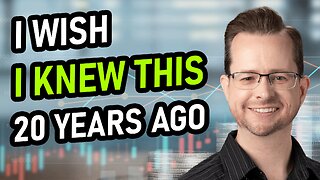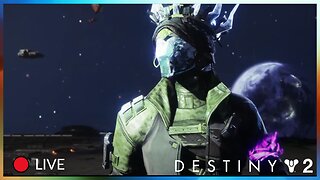Heinz not Henry?
In the shadows of global politics, food has been
weaponized as a tool for control.
A chilling strategy, conceived by Henry Kissinger in
1974, sought to manipulate population
growth in developing countries through the leverage of food supply
a tactic with profound implications for national sovereignty and technological progress.
On December 10, 1974, a classified study
titled “National Security Study Memorandum 200” was
completed under the guidance of Henry Kissinger.
It painted a grim picture, suggesting that population growth
in less developed countries posed a dire threat to U.S. security.
President Gerald Ford officially adopted this policy,
laying the groundwork for a covert operation to curb
population growth, through birth control, and implicitly,
through war and famine. Brent Scowcroft was tasked
with the plan's execution, with notable figures like CIA
Director George Bush assisting. Kissinger's views were not
entirely his own but echoed the earlier British Royal Commission on Population.
This commission had concluded that Britain's influence was
imperiled by the burgeoning populations of its colonies, which
could surpass the West in industrial and military might.
Similarly, NSSM 200 identified 13
countries of concern, including Nigeria and Brazil,
predicting their increased political and strategic roles due to population growth.
To counter this perceived threat, Kissinger proposed using food as a strategic tool.
By controlling food supplies, the U.S. could enforce birth
control policies in targeted nations.
The document chillingly considered whether the U.S. was ready to
impose food rationing to support countries that could not manage their population growth.
Kissinger foresaw a resurgence of famines, an outcome
not of natural causes but of deliberate Western financial
policies- that would cripple the ability of developing countries
to sustain their food production and imports.
The implications of Kissinger's plan were stark.
It was not just about population control but also about
stunting the technological development of nations that could challenge the
geopolitical dominance of the West.
The strategy suggested a world where food security was a
privilege, not a right, and where the fate of nations
could be determined by their adherence to external demands.
The revelations of NSSM 200 offer a sobering
reminder of the lengths to which global powers may go
to maintain their supremacy. As we reflect on the
ethics and consequences of such strategies, it is crucial to
recognize the enduring battle for food sovereignty and the right
of every nation to chart its technological destiny.
Who was Henry Kissinger? According to official information, Kissinger’s
family immigrated to the United States in 1938 to
escape the Nazi persecution of Jews.
However, In 1938, the United States had a
quota system in place for immigration.
The maximum number of German citizens (which included
Jews) who were permitted to immigrate to the U.S. each
year was set at less than 26,000 persons. it’s
important to note that obtaining a visa was a complex
process and many who applied were not successful.
In fact, by late 1938, American consulates
were flooded with 125,000 applicants for
visas, many coming from Germany and Austria.
This led to a significant waiting list, almost eleven years in most cases.
Holocaust survivor who became the most influential US
diplomat, serving as secretary of state under Presidents Nixon and Ford.
Born Heinz Alfred Kissinger, in Fuerth, Germany.
He became a naturalized citizen, serving in the U.S.
Army as a German interpreter from 1943 through 1946.
After graduating from Harvard, in 1954 he
worked there until 1969, just in time to become the
national security advisor to President Nixon, a position
he held until 1975. All tucked nice and
neat into a ONE WORLD ORDER TO GO.
-
 18:44
18:44
We Profit with Stock Curry
6 days agoUltimate Advice for Teens & Young Adults
37.2K13 -
 LIVE
LIVE
Lofi Girl
1 year agoSynthwave Radio 🌌 - beats to chill/game to
199 watching -
 21:00
21:00
Mr. Build It
23 days ago3 Ways to Build Garden Beds
33.6K14 -
 1:42:14
1:42:14
Jewels Jones Live
1 day agoDETRANS w/ special guest Mary Margaret Olohan | A Political Rendezvous - Ep. 78
39.7K21 -
 1:36:46
1:36:46
Roseanne Barr
1 day ago $73.82 earnedFor Love of Country with Tulsi Gabbard | The Roseanne Barr Podcast #50
155K437 -
![[D2] Rumble Featured!! Lets Go!!! #RumbleTakeOver](https://hugh.cdn.rumble.cloud/s/fw/s8/1/5/g/l/6/5gl6r.0kob-small-D2-Onslaught-Grind-w-Some-P.jpg) 6:28:15
6:28:15
CHiLi XDD
14 hours ago[D2] Rumble Featured!! Lets Go!!! #RumbleTakeOver
49K7 -
 2:45
2:45
Chicks in the Office
12 hours agoHolly Madison Talks Reconciliation with Kendra Wilkinson
61K38 -
 7:58:23
7:58:23
Di bear
14 hours agoFinal Season Mission, Pantheon | Destiny 2
64.7K7 -
 6:54:43
6:54:43
SquallRush
16 hours agoAthenian Rhapsody!
56.4K8 -
 1:47:01
1:47:01
Real Coffee With Scott Adams
14 hours agoEpisode 2492 CWSA 06/01/24
66.1K51